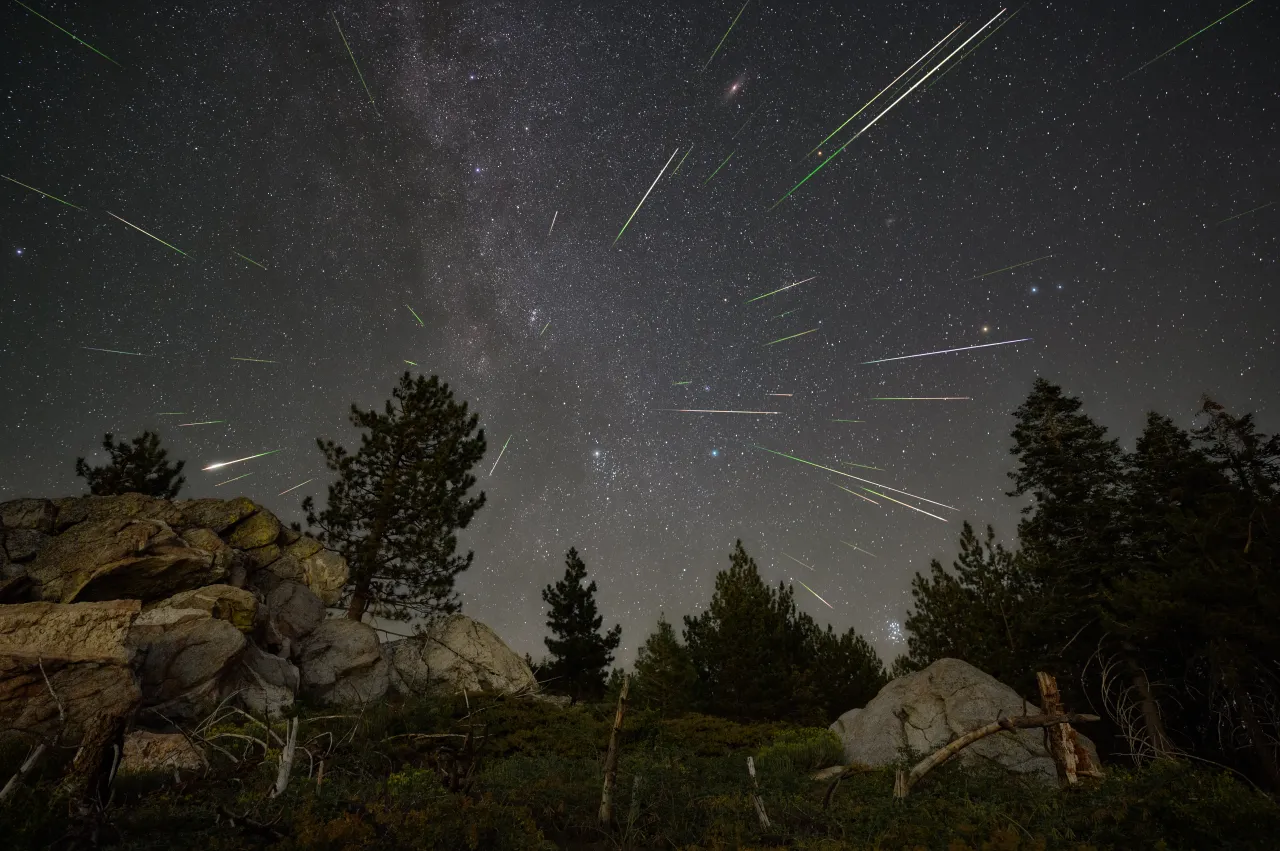The Perseids are widely considered one of the best meteor showers of the year. Active during the warm nights of summer, this shower is known for its high number of bright meteors. The Perseid radiant is in the constellation Perseus, which is always above the horizon for many northern observers, making it a great all-night event.
- Duration: July 17–August 24, 2026.
- Predicted Peak: ~02:00 UTC on August 13, 2026.
- Hourly Rate: A reliably excellent shower with rates of 50-75 meteors per hour. Under ideal dark-sky conditions, rates can exceed 100.
- Radiant: In the constellation Perseus. The radiant is circumpolar at mid-northern latitudes, meaning it’s always above the horizon and can be seen at any time of night.
- Parent Body: Comet 109P/Swift–Tuttle.
- Moon Phase: New Moon on August 18, 2026. This provides an almost entirely moonless sky during the peak, creating superb viewing conditions.

Stargazers can expect to see anywhere from 10 to 50 meteors per hour during the peak. This is a significant drop from the 100 per hour that might be visible under ideal, moonless conditions, but still a spectacle worth seeing. The moon, which will be nearly 85% full, is the main culprit for the reduced visibility.
Radiant Point of the Perseid Meteor Shower
While looking for a meteor shower, we must first locate the radiant point. A radiant point is a point in the sky from which meteors seem to originate. Every meteor shower has its own radiant point. The meteor showers are typically named after the constellation in which their radiant point is located.
The radiant of the Perseids is located in the constellation Perseus, near Cassiopeia. The Perseids will be best visible from the northern hemisphere.
Parent Body of the Perseid Meteor Shower
The Perseids are one of the most anticipated meteor showers of the year. Unlike the famous Geminids that originate from an asteroid, the Perseids originate from comet 109P/Swift-Tuttle.
The comet was discovered by two astronomers, Lewis Swift and Horace Tuttle, in 1862. The letter ‘P’ suggests that the comet is periodic. Comet 109P/Swift-Tuttle orbits the sun every 136 years. A Perseid meteor shower occurs when the Earth passes through the debris trail left by this comet.
How to Observe a Meteor Shower?

The Perseid Meteor Shower, like most meteor showers, does not require any telescope or binoculars. In fact, wide, unobstructed views of the sky are best. Here are some practical tips to maximize your experience:
- A dark sky site will double the number of meteors you see compared to a city backyard.
- Eyes take time to adapt to the dark. It could take up to 30 minutes before you start seeing the meteors.
- Meteors may radiate from Ursa Minor, but many streak far from it. Keep your gaze wide.
- Dress warmly; December observing can be frosty.
- A blanket, chair, and some food will keep you cozy and entertained.
Refer to our Meteor Shower Calendar!

